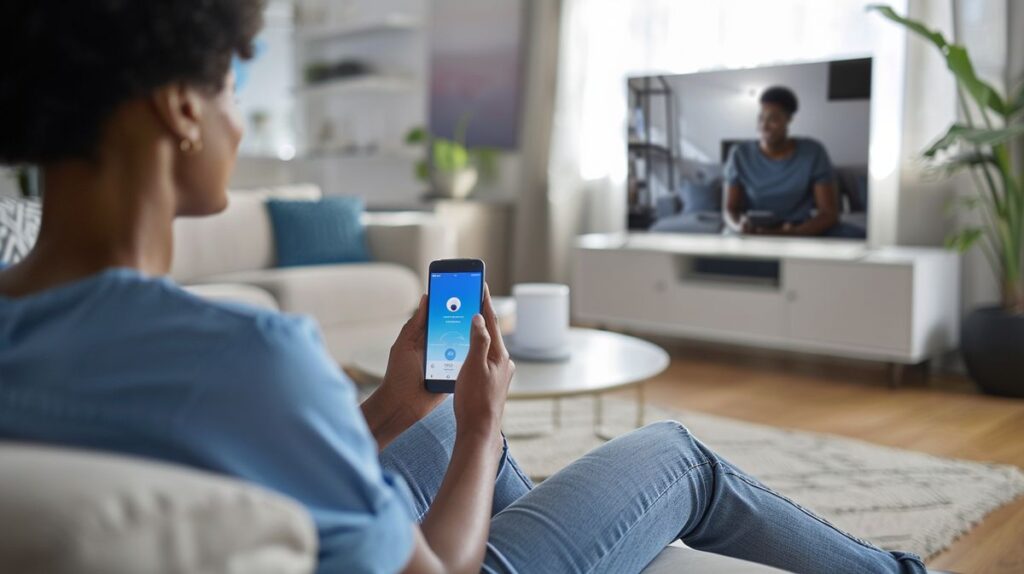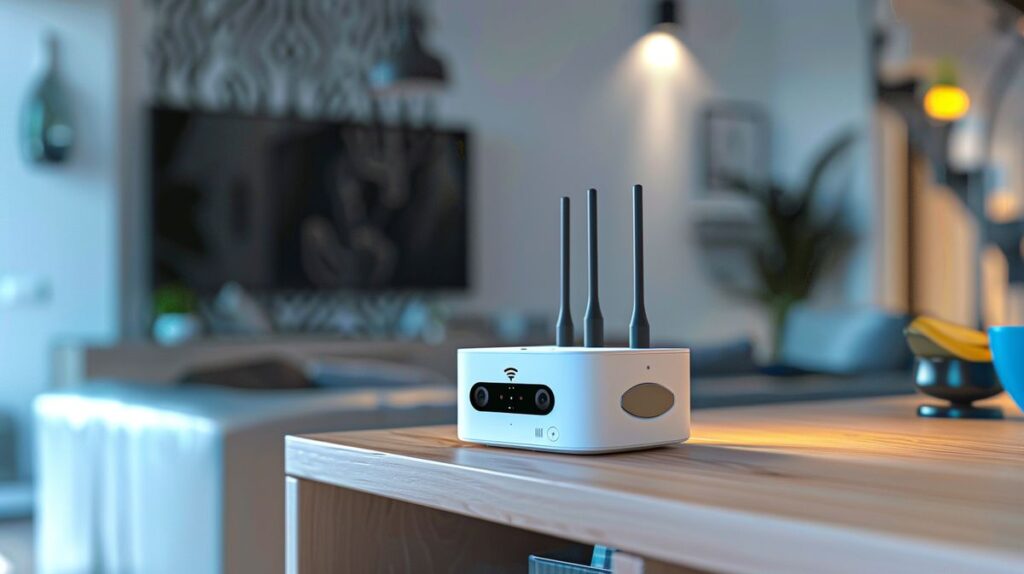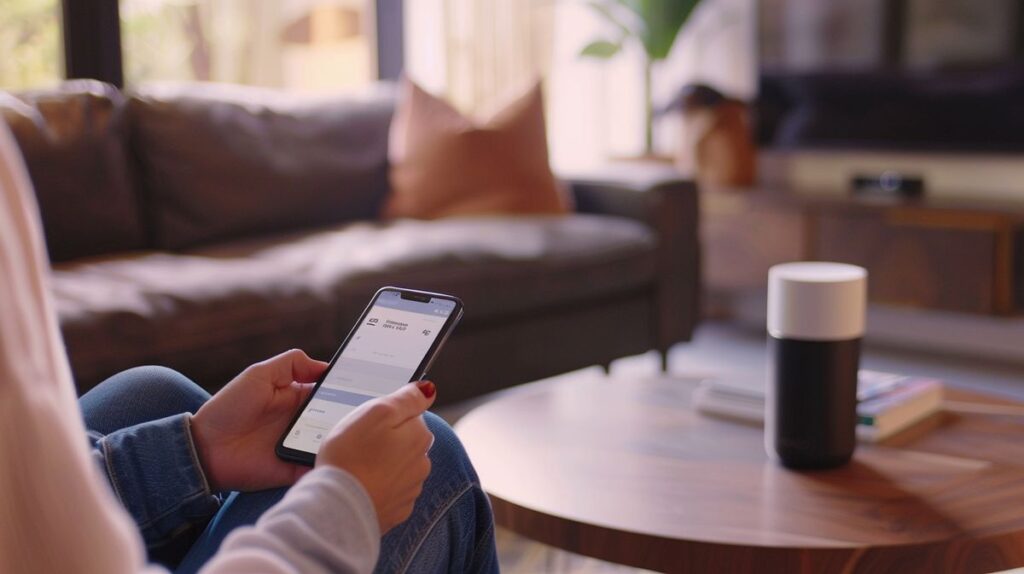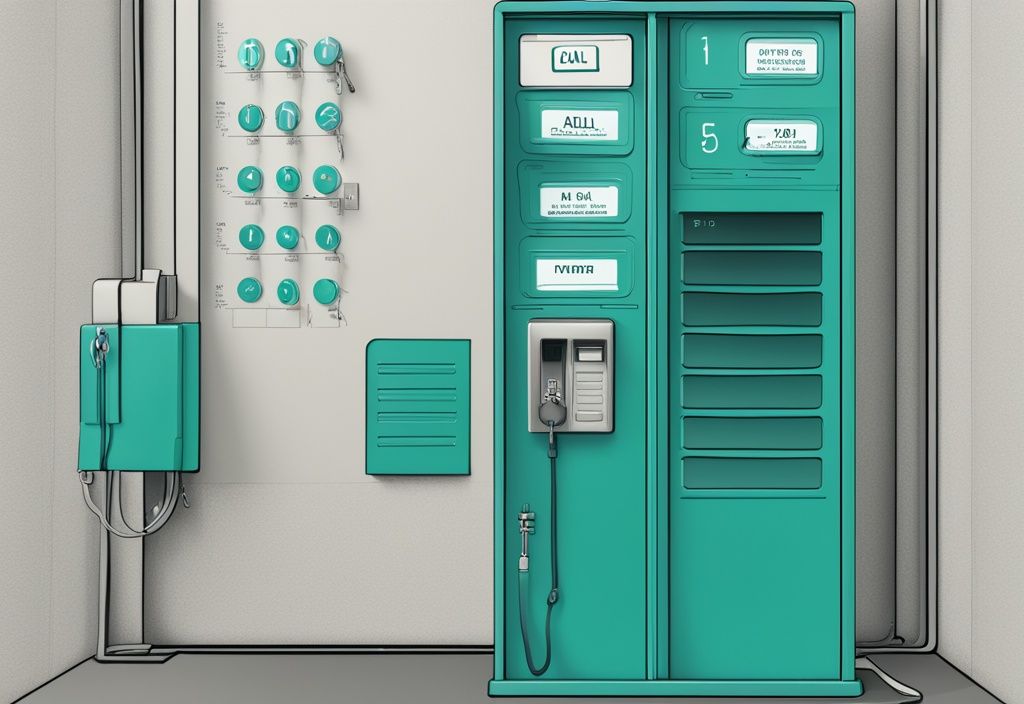Complete Guide: How to Connect Xfinity Camera to New WiFi Easily
Is your Xfinity camera giving you a hard time connecting to the new WiFi network? You’re not alone. As a home security expert, I run across the same issue time and time again. Luckily, I know just the fix.
Whether you’ve changed Internet Service Providers, got a new modem, or perhaps upgraded your home to a larger space—there are countless reasons for your Xfinity camera to go haywire.
In this step-by-step guide, I’m going to walk you through everything you need to know to connect your Xfinity camera to the new WiFi like a pro. Prepare to embrace a swift, secure, and foolproof camera connectivity with your new WiFi network.
Introduction: Why You Might Need to Connect Your Xfinity Camera to a New WiFi Network
-
Switching ISPs Often Requires New Network Configurations
Changing your Internet Service Provider (ISP) usually means setting up a new WiFi network. This involves configuring all devices, including your Xfinity camera. Knowing how to connect your Xfinity camera to a new WiFi network ensures your security system stays uninterrupted. Just like switching to a more reliable postal service, think of it as ensuring your packages (camera footage) always arrive safely.
-
Upgrading to a New Modem/Router for Better Performance
When upgrading your modem or router to improve speed and network performance, new network settings become necessary. Learning how to connect your Xfinity camera to a new WiFi network is essential. Imagine upgrading your car engine; it’s the same old car but with better performance. Ensuring your camera benefits from these upgrades is key to maintaining optimal security.
-
Moving to a New Home Where Network Setup is Different
Relocating to a new home brings a unique network setup. Your Xfinity camera needs to be reconnected to the new WiFi to keep your home secure. Think of it as unpacking all your belongings and finding a new place for each. Understanding how to connect Xfinity camera to new WiFi aids in a smooth transition, maintaining your peace of mind.
-
Security Benefits of Refreshing Your WiFi Network Credentials Periodically
Refreshing your WiFi credentials periodically is like changing the locks on your doors. It helps protect against unauthorized access and improves network health. Keep your Xfinity camera functioning securely by updating it with the latest credentials. Don’t overlook this simple yet powerful security measure.
In this video, learn how to connect your Xfinity camera to a new WiFi network using the WiFi mode, and discover how to add multiple cameras for enhanced home security.
-
Resolving Technical Issues Such as Network Speed or Double NAT Issues
Technical issues such as slow network speed or double NAT problems can impair your Xfinity camera’s performance. Switching to a new router or reconfiguring the current one can resolve these problems. Knowing how to connect your Xfinity camera to new WiFi is crucial for troubleshooting and ensuring your camera operates optimally.
Prerequisites for Connecting Xfinity Camera to New WiFi
Before diving into connecting your Xfinity camera to a new WiFi network, it’s essential to ensure that your equipment is up to the task. Let’s cover the key areas you’ll need to focus on.

Ensuring Modem and Router Compatibility
- Verify compatibility: Make sure your modem and router are compatible with Xfinity Home devices. It’s essential for a smooth setup process.
- Recommended devices: Check Xfinity’s list of recommended devices. This list provides references to the best-performing equipment, ensuring optimal results when connecting your Xfinity camera.
- Contact Support: Any doubts or specific compatibility questions? Reach out to Xfinity support. They can ensure your network equipment supports the camera fully.
Replacing Existing Modem with NETGEAR Nighthawk Cable Modem
- Resolve Double NAT issues: The NETGEAR Nighthawk modem is effective in resolving Double NAT problems, which can disrupt connectivity.
- High-speed internet access: This modem offers faster internet speeds ranging from 600 to 800 Mbps, which is beneficial for seamless video streaming and camera connectivity.
- Enhanced reliability: Beyond speed, the NETGEAR Nighthawk provides enhanced reliability, ensuring your Xfinity Home devices maintain consistent, high-quality performance.
Using Netgear Orbi Satellites for Enhanced Coverage
- Access Point (AP) mode: Setting up Netgear Orbi Satellites in AP mode can significantly improve your mesh network coverage.
- Improved connectivity: This setup ensures better device connectivity throughout your home, reducing dead zones and weak signals.
- Stable connection: Especially in larger homes, Orbi Satellites help maintain a stable connection, which is crucial for continuous camera performance.
Network Configuration: Changing Network Names and Passwords
- Change SSIDs and passwords: Follow the steps to update your network’s name (SSID) and password. Ensure to synchronize this change across all your devices for consistency.
- Uniform network names: Keeping uniform network names and passwords facilitates seamless connections for all devices, including your Xfinity camera. This practice minimizes disruptions and connection errors.
- Security preferences: When updating network credentials, align them with your security preferences. This action not only secures your network but also enhances the overall safety of connected devices.
Step-by-Step Guide to Connect Xfinity Camera to New WiFi
Here’s your detailed guide on how to seamlessly connect your Xfinity camera to a new WiFi network, focusing on each crucial step to make the process as smooth as possible.
Prepare Your Xfinity Camera
Ensure the Power Light is Blinking White
- First, make sure your Xfinity camera is turned on.
- A blinking white light means the camera is in setup mode and ready to connect.
Disconnecting from Current WiFi, If Necessary
- Is your camera still tied to an old network? You’ll need to remove it from there.
- Go into the Xfinity Home app or the camera’s settings to manually disconnect from the old WiFi network.
Use the Xfinity Home App for Setup
Logging into the Xfinity Home App
- Open the Xfinity Home app on your smartphone or tablet.
- Use your Xfinity account credentials to log in and access your device settings.
Navigating to the Devices Section and Selecting Your Camera
- Once logged in, head over to the “Devices” section.
- Select the camera you want to connect to your new WiFi from your list of devices.
Entering New WiFi Network Details
- Follow the prompts to enter your new WiFi network name (SSID) and password.
- Ensure the details are accurate to prevent any connection hiccups.
Troubleshooting Connection Issues
Resetting the Camera
- Having trouble connecting? Find the reset button on your camera.
- Press and hold it for about 10 seconds to reset the device, indicated by blinking lights.
Re-entering WiFi Credentials
- Double-check there are no errors in your SSID and password entries.
- Re-enter the details if necessary to resolve connection issues.
Dealing with the “Camera is already linked to another network” Message
- If you see this message, reset the camera to unlink it from the previous network.
- After resetting, repeat the initial setup steps to connect to the new WiFi.
Connecting via Bluetooth if Promoted
- Follow the app’s instructions for a Bluetooth-enabled setup.
- Ensure Bluetooth is enabled on your mobile device for a smooth connection.
Using a Wired Setup
- For a more stable setup, connect your camera directly to the router with an Ethernet cable.
- This can help avoid potential WiFi issues during the setup.
Checking and Updating Camera Firmware
- Check for firmware updates via the Xfinity Home app.
- Apply any available updates to enhance the camera’s performance and connectivity.
Rebooting Modem and Xfinity Camera
- If issues persist, reboot your modem or gateway.
- Restart the Xfinity camera to refresh its connection to the new network.

Verifying Connection Status in the Xfinity Home App
What to Do if the Camera Shows Offline
- If the camera is offline, reset it and repeat the setup process.
- Double-check your network settings to ensure they’re correct before retrying.
Addressing Constant Blinking Amber Light
- A blinking amber light usually indicates a connectivity issue. Reset the camera using the power block or device buttons.
- Follow the setup process again to reconnect to the new network.
Ensuring Optimal Camera Performance Post-Connection
Connecting your Xfinity camera to a new WiFi network is just the first step towards creating an ideal smart home that seamlessly anticipates your needs and instantly responds to commands. For more information on smart home integration, check out https://www.wired.com/story/what-is-matter/.
Here’s how to make sure it performs optimally after you’ve set it up.
Operating on the 2.4GHz Band
- When figuring out How to Connect Xfinity Camera to New WiFi, ensure your network operates on the 2.4GHz band. Most Xfinity cameras work best on this frequency, which offers better connectivity and a longer range than the 5GHz band.
- Check your router settings to confirm the active frequency band. Access your router’s admin panel and make sure the 2.4GHz band is enabled and preferred for connecting IoT devices.
- This band offers a broader coverage area, useful if your camera is positioned far from the router.
Maintaining a Strong WiFi Signal
- Proper placement of your router and camera is crucial. Place the router centrally and at an elevated location with minimal obstructions for optimal signal distribution.
- In larger homes, WiFi extenders or mesh systems like Netgear Orbi can greatly improve coverage, ensuring your camera stays connected.
- Regularly check the signal strength in the Xfinity Home app under camera settings, and reposition devices if necessary to maintain strong connectivity.
Checking Network Restrictions
- Ensure no network settings are blocking the camera’s access. Firewalls or parental controls could hinder connectivity, so review these settings if connection issues persist.
- If network restrictions are suspected, contact your ISP or Xfinity support for guidance and troubleshooting.
- Ensure your network allows for the necessary bandwidth and IP address for your camera to function without interruptions.
Securing Your WiFi Network
- Security is paramount when connecting any device. Use WPA2 encryption for your WiFi network to protect against unauthorized access.
- Regularly update your WiFi passwords. Use a strong, unique password combining letters, numbers, and special characters.
- Periodically review your network’s security settings and update your router’s firmware to ensure it includes the latest security patches.

Adjusting Camera Settings through the App
- Access the camera settings via the Xfinity Home app to customize the functionality of your camera. Features like motion detection, alert notifications, and recording preferences can be tailored to suit your needs.
- Adjust sensitivity levels for motion detection to reduce false alarms and set up alert zones to monitor specific areas within the camera’s view.
- Regularly check for firmware updates through the app to ensure your camera runs the latest software, providing optimal performance and security features.
How to Connect Xfinity Camera to New WiFi
Importance of a Stable and Secure Connection
Ensuring a stable and secure connection for your Xfinity camera is crucial for maintaining reliable home security. Think of it as the foundation of your home security setup. Without it, everything else can become unreliable. Regularly updating your network credentials and verifying your network’s compatibility can prevent connectivity issues and enhance the performance of your camera. Imagine a security guard who suddenly loses their walkie-talkie signal. That’s what it’s like when your camera connection fails. If you’re concerned about your camera’s functionality, you might want to know how to tell if a security camera is recording you.
Key Steps for Successful Setup
- Compatibility Check: Begin by ensuring your modem and router are compatible with Xfinity Home devices. It’s like making sure your car keys match your car.
- Preparing Equipment: Use devices like the NETGEAR Nighthawk modem to resolve common network issues. Think of it as having the right tool for the job.
- Reconfiguration: Follow steps to disconnect your camera from the old network and reconnect using the Xfinity Home app. This is your chance to start fresh with a clean slate.
- Troubleshooting: Address any connection problems by resetting your camera and re-entering WiFi credentials as needed. Troubleshooting is like retracing your steps to find where you dropped your keys.
Tips for Troubleshooting
- Reset Procedures: Regularly reset your camera to resolve persistent connectivity issues. Sometimes, it just needs a quick reboot to start working again, much like a tired computer.
- Firmware Updates: Keep your camera’s firmware up to date to ensure optimal performance. Think of it as getting the latest vaccine—crucial for protection.
- Network Setting Adjustments: Make sure your network operates on the 2.4GHz band for better connectivity and check for any network restrictions. It’s akin to tuning your radio to the right frequency.
Reach Out for Assistance
If you encounter ongoing issues despite following these steps, don’t hesitate to reach out to Xfinity support. Their customer service team can provide tailored assistance and, if necessary, arrange for a technician to visit your home. Keeping your home network secure and your Xfinity camera functional will ensure you have constant peace of mind in your home security setup.
Remember, a secure home is a happy home. It’s your first line of defense in protecting what matters most. If you’re struggling, seeking expert help isn’t a sign of defeat; it’s a smart move.
FAQ
Why won’t my Xfinity camera connect to my new WiFi?
Incorrect WiFi credentials, network compatibility issues, or outdated firmware could be the problem. Double-check the SSID and password. Ensure your network equipment is compatible. If you encounter issues, check out our guide on resolving problems when the Vivint app is not working. Update the camera firmware if needed.
How do I reset my Xfinity camera?
Find the reset button on your camera. It’s usually on the back or bottom. Press and hold this button for about 10 seconds until you see the lights blink. This indicates the camera has reset.
Can I use a wired setup to connect my Xfinity camera to my new WiFi?
Yes, you can use an Ethernet cable during the initial setup. This provides a stable connection, helping ensure the setup process goes smoothly before switching to a wireless connection.
Which WiFi band should I use for my Xfinity camera?
The 2.4GHz band is recommended for Xfinity cameras. It offers better connectivity and range compared to the 5GHz band, which is better for high-speed data transfer.
What should I do if my Xfinity camera is still offline after trying all solutions?
Review all connection and setup steps to ensure accuracy. If problems persist, contact Xfinity support for further assistance. Consider scheduling a technician visit for in-depth troubleshooting.
I’m James Albright, a home security expert with over 15 years of experience, and I’m passionate about helping families protect what matters most. After serving as a police officer, I transitioned to security consulting to share my hands-on knowledge and practical tips. My mission is to make home security simple and reliable by offering clear, no-nonsense advice and easy-to-follow guides. When I’m not reviewing the latest security tech or writing, I’m out in the community leading neighborhood watch programs and, most importantly, keeping my own family safe.





Post Comment